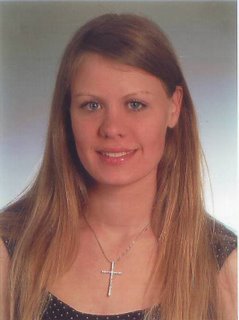Introduction to Linguistics, Session 3, Thursday, 2006-11-2
Introduction to Linguistics, Session 3, Thursday, 2006-11-2
The History of English
................
...........................................Indo-European
..........................................↓........................... ↓
..................................centum ......................satem
.........................↓ ...............↓...... ↓ ..........↓ ................↓
....................Germanic ....Celtic ... ..Balto-Slavic Indo-Iranian
...................↓...... ↓ ...↓
............West .....East North
..........↓ .........↓
Anglo-Frisian German
....↓ ........↓
English Frisian
(Tree graph: illustrates the relationships between the descendants of the common ancestral language Indo-European)
English belongs to the Indo-European language family. Languages like English, German (Germanic languages), Roman languages and even Baltic and Slavic languages may be similar because they have developed from the same origin which is Indo-European.
Indo-Iranian languages from which for example Kurdish and Hindi are derived and Balto-Slavic languages like Polish or Serbo-Croatian are still a little bit more different from Italic, Celtic and Germanic because the ladder group is an descendent branch from the so called "centum" whereas the other belong to the satem language family spoken in the east.
But, nevertheless these differences, we can still find more or less close relationships between these languages concerning their vocabulary (form and meaning).
Theories about the geographical origin of Indo-European
There are several different and controversial theories about the geographical origins of Indo-European, today.
1.) The Baltic theory
The Baltic theory is the oldest theory based on shared botanical vocabulary such as "beech, Buche" for example. The putative geographical location of these plants explains the possible origin of this language, but it does not explain any reasons for its dispersion.
2.) The South- East European Theory
The South- East European Theory is similar to the Baltic theory. It does not explain any reasons for the dispersion of Indo-European, either.
3.) The Flood Theory
The Flood Theory, in contrast to the Baltic and the South- East Theory, does give reason for the dispersion of Indo- European. Native speakers of Indo-European were forced to leave their original location because of a natural catastrophe.
4.) The Caucasus Theory
The most plausible theory of all is the Caucasus Theory. The origins of agriculture are said to have spread East-West from the Fertile Crescent (Iraq) between about 7,000- 3,000 BC, which coincides with what has been postulated about the East-West spread of Indo- European languages.
Expansion of different tribes and nations, their culture and language
-Expansion of Indo- European:
Indo- European expanded between about 5000- 3000 BC, that was exactly at the same time the spread of agriculture took place.
-Hellenic expansion
About 330 BC, the Hellenic empire under Alexander the Great, which left extensive Greek influences, e.g. the New Testament of the Bible
-Roman expansion
About 100 BC- 400 AD, the Roman empire, which left many Latin influences, e.g. the Romance languages Italian, Spanish, Portuguese, French and Romanian.
The Roman Catholic Church also spread rapidly on the European continent.
-Colonial expansion after 1492:
Romance languages like Portuguese, Spanish and French and Germanic languages like Dutch and English can be defined as colonial languages. Romance and Germanic speaking European nations colonised many African and Caribbean countries and islands. Their native language served as lingua franca and often became adapted or creolised by the invaded countries.
Creolization is a special and extreme kind of language change, which uses the mentioned European languages as superstrat and old (most of all) African languages as substrates. On the basis of this syntheses, new languages that can be defined as pidgins and Creoles are like to emerge.
Colonisation and emigration of Indo-European language speakers are some reasons for their dominant position in the world.
European languages like Portuguese, French, Spanish, Dutch and English serve still as official languages in countries that have been colonised in the past.
Spanish and Portuguese speaking people have most of all colonised the South American continent. The slaves they brought there from all over the world often spoke very different substrate languages (their native language). This fact based on purpose, because it is less easy for slaves to revolt if they do not speak the same language.
They all had to adapt the language of their European lords to communicate with them and between each other.
The dominant language quickly became the language of high prestige. Although most of the ancient invaded countries are independent today, they still keep contact to their European colonial country. They often have adapted the language of the ancient colony.
These languages often represent the official languages of these countries, today.
Most of all, English and French are languages that are represented all over the world. Many languages even belong to a language alliance (Commonwealth and Francophony).
English is spoken all over the world, because of colonisation and migration. It is spoken in Ireland, North America (USA and Canada), Australia, India, in a lot of Africa countries like Gambia or Cameroon for instance and even on different islands in the Atlantic Ocean (e.g. Jamaica).
French is spoken in Canada (Quebec), on islands that belong to France (Département d’outre mer (TOM) and Territoires d’ourtre mer (DOM) : Guadeloupe, Réunion, Martinique etc.) and in many African countries like Côte d’Ivoire, Seychelles or Madagascar that belong to the Francophony.

